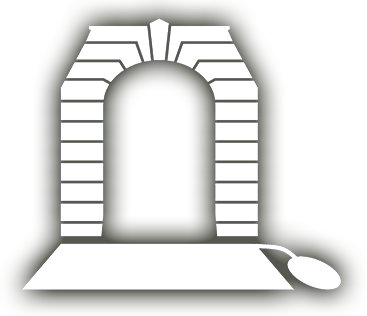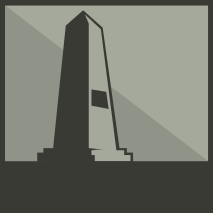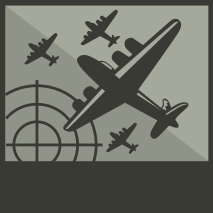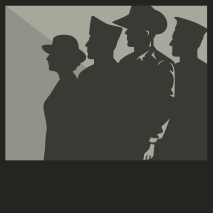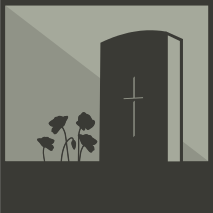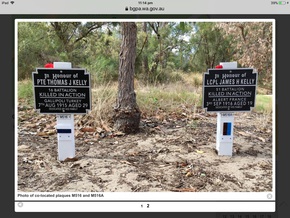
KELLY, James Henry
| Service Number: | 2692 |
|---|---|
| Enlisted: | 19 August 1915 |
| Last Rank: | Lance Corporal |
| Last Unit: | 51st Infantry Battalion (WW1) |
| Born: | Leederville, Western Australia, 31 December 1896 |
| Home Town: | Fremantle, Fremantle, Western Australia |
| Schooling: | Fremantle State School, Western Australia |
| Occupation: | Farmer |
| Died: | Killed in Action , Albert, France, 3 September 1916, aged 19 years |
| Cemetery: |
Ovillers Military Cemetery Plot XVI, Row V, Grave No.1 |
| Memorials: | Australian War Memorial Roll of Honour, Fremantle 849 Memorial, Kings Park Western Australia State War Memorial |
World War 1 Service
| 19 Aug 1915: | Enlisted Australian Army (Post WW2), Private, 2692 | |
|---|---|---|
| 2 Nov 1915: | Involvement Private, 2692, 28th Infantry Battalion, Battle for Pozières , --- :embarkation_roll: roll_number: '16' embarkation_place: Fremantle embarkation_ship: HMAT Ulysses embarkation_ship_number: A38 public_note: '' | |
| 2 Nov 1915: | Embarked Private, 2692, 28th Infantry Battalion, HMAT Ulysses, Fremantle | |
| 3 Sep 1916: | Involvement Lance Corporal, 2692, 51st Infantry Battalion (WW1), Battle for Pozières , --- :awm_ww1_roll_of_honour_import: awm_service_number: 2692 awm_unit: 51 Battalion awm_rank: Lance Corporal awm_died_date: 1916-09-03 |
Help us honour James Henry Kelly's service by contributing information, stories, and images so that they can be preserved for future generations.
Add my storyBiography contributed by Evan Evans
From Francois Somme, France
LCpl 2692 James Henry Kelly,
51st Australian Infantry Battalion,
13th Brigade, 4th Australian Division, AIF
In this end of summer in the Somme, as far as the eye can see, waves of red poppies undulate in silent waves caressed by the breeze which, in a breath, make us hear, almost ghostly, the murmurs and voices of thousands young men who here, more than a hundred years ago, proud and singing behind the bugles, marched alongside their comrades in the prime of their lives to join the front line hoping that they would live the greatest adventure of their lives of which they were told so much but in the trenches, under the fire, they met only death, the wounds, and in the mud, counting their days to zero, sank on their knees, in a mud red with blood and went in the darkness of a world that slowly sank into fury and despair but, in the brotherhood of their camaraderie, found the light that guided them to do what was right then, after a last prayer, after a last look of of apprehension but also of pride towards their comrades, they charged through the barbed wire bayonets forward and met their fates which often guided them towards the light of remembrance, towards their white graves behind which they still stand young and proud and, on the words of their epitaphs, tell us the stories of their lives which were taken too soon but which, by their sacrifices and their courage which they all showed in France, allowed us to stand in front of them with respect, so that we could live but for them, for all that they did for my country, I wish to dedicate my life to them so that their names live forever and it is for this reason that I will always watch over them with care, so that their memory, like the poppies, never fades.
Today, it is with the utmost respect and with the deepest gratitude that I would like to honor the memory of one of these very young men, of one of my boys of the Somme who, for us, for Australia and for France, for peace and freedom, gave his life.I would like to pay a very respectful tribute to Lance Corporal number 2692 James Henry Kelly who fought in the 51st Australian Infantry Battalion, 13th Brigade, 4th Australian Division of the Australian Imperial Force, and who was killed in action 109 years ago, on September 3, 1916 at the age of 19 during the Battle of the Somme.
James Henry Kelly was born on December 31, 1896 in Leederville, Western Australia, and was the son of James and Amy Elizabeth Kelly, who lived first at 155 Holland Street, East Fremantle, Western Australia then at 121 Queen Victoria Street, Fremantle ,Western Australia and finally at 96 Moran Street, Boulder City, Western Australia. He was educated at Fremantle State School, then after graduation, worked as a farmer until the outbreak of the war.
Driven by the deep desire to do his duty like his friends on the battlefields for his country, James enlisted on August 19, 1915 in Perth, Western Australia, as a Private in the 28th Australian Infantry Battalion, 6th Reinforcement, 7th Brigade, 2nd Australian Division, which was raised in April 1915 under the command of Lieutenant Colonel Herbert Collett, then, after a period of training of just over two months at Blackboy Hill Camp, near Perth, where he learned the use of rifle and the bayonet charge, he embarked with his unit from Fremantle, on board HMAT A38 Ulysses and sailed for Egypt and arrived at Zeitoun on March 3, 1916 and after a new period of training in the 7th Training Battalion under the shadows of the pyramids, was transferred and taken on strength in the 51st Australian Infantry Battalion at Tel-El-Kebir.
The 51st Battalion was raised in Egypt in the first week of March 1916, as part of the "doubling" of the AIF. Approximately half of its recruits were Gallipoli veterans from the 11th Battalion, and the other half, fresh reinforcements from Australia,including James. Reflecting the composition of the 11th, the 51st was predominantly composed of men from Western Australia. The battalion became part of the 13th Brigade of the newly-formed 4th Australian Division and was under the command of Lieutenant Colonel Arthur Murray Ross, a regular British Army officer who had a deep respect for his men,then on June 5, James and his comrades joined the British Expeditionary Force in Alexandria and proceeded overseas for France on board HMT Ivernia.
On June 12, 1916, after a good trip of a week on the Mediterranean Sea, James finally arrived in France and was disembarked in Marseilles then after a night's rest, the men of the 51st Battalion embarked by train for Abbeville where they arrived in the evening of June 13 and after a meal break, took another train to Caestre then from there, marched into billets to Moolenaecker where they followed a period of training including marches, musketry then completed their equipment and received many Lewis Guns as well as gas masks then moved to Sailly-Sur-La-Lys on June 19 where they underwent anti-gas drills and marched to the front line in the Petillon sector, near Fleurbaix where the 51st Battalion acclimatized to trench warfare and experienced for the first time the fire of the German heavy artillery which pounded the australian positions and suffered their first casualties, which, on the evening of June 30, amounted to 23 men, 5 of whom were killed in action and 17 were wounded then, from July 2, daily patrols were carried out at night by the men of the 51st and continued to suffer from the enemy artillery which cut the lines of communication and inflicted heavy damage in the trenches which had to be repaired and improved every day but the ranks of the 51st continued to fall and on the evening of July 3, the battalion had already lost 50 men and were finally relieved of the front line on July 11 and marched into billets at Estaires.
On July 12, 1916, James and the men of the 51st Battalion left Estaires and moved back to Moolenaecker and the next day were sent by train to the Somme front and arrived at Doullens on July 14. From there they marched to Halloy-Les-Pernois where all the men received new boots, rations and followed a new period of training including marches, field exercises and received the reinforcement of 130 men then on July 30, marched for Herissart then for Vadencourt the following day and moved into billets, at "Brickfields", in Albert on August 6th then, after a few days of reconnaissance carried out at Pozieres by officers of the 51st between Pozieres Cemetery and Mash valley, the battalion joined the front line and took up position in the " Wire Trench", located very close to Mouquet Farm on August 13 where the battalion experienced its first major engagement in the Somme.
The Battle of Mouquet Farm, also known as the Fighting for Mouquet Farm was part of the Battle of the Somme and began during the Battle of Pozières (23 July-3 September). The fighting began on 23 July with attacks by the Reserve Army and it was captured by the 3rd Canadian Division of the Canadian Corps on 16 September. The farm was lost to a German counter-attack, before being re-captured on 26 September, during an attack by the 11th (Northern) Division during the Battle of Thiepval Ridge (26-28 September), in which No. 16 Section of the 6th East Yorkshire (Pioneers) smoked out the last German defenders.
During the night of 10 August, parties of the 4th Australian Division of the 1st Anzac Corps, attacked towards the farm and managed to establish advanced posts in the valley south of the farm and to the east. Attacks were then made from a foothold in Fabeck Graben (Fabeck Trench) to the north-east and to deepen the salient near the farm. By 22 August, the 2nd Australian Division had made several more attempts on the farm and had realised that the main defensive position was underground, where the Germans had excavated the cellars to create linked dug-outs. On 3 September, the 4th Australian Division attacked again with the 13th Brigade and captured much of the surface remains of the farm and trenches nearby, with hand-to-hand fighting in the ruins and underground. German counter-attacks repulsed the Australians except from a small part of Fabeck Graben, for a loss of 2,049 Australian casualties.
During the battle, the 1st Anzac Corps divisions, advanced north-west along the Pozières ridge, towards the German strong point of Mouquet Farm, with British divisions supporting on the left. The approaches to the farm were visible to German artillery observers, who directed artillery-fire on the attackers, from three sides of the salient that had developed in the lines. Many casualties were caused to the attackers as they approached the farm and in August and into September, the Australian divisions were repulsed three times from the farm.
The Canadian Corps relieved the 1st Anzac Corps on 5 September. The Canadians captured part of the farm on 16 September and were then repulsed by a counter-attack. By 25 September, further attacks had captured part of the farm on the surface but the Germans still held the cellars, dug-outs and tunnels beneath. The farm was captured on 26 September by the 34th Brigade of the 11th Division, in the general attack of the Battle of Thiepval Ridge. The 9th Lancashire Fusiliers bombed the exits of the underground positions and also managed to reach the second objective, at the west end of Zollern Trench, where German machine-gun nests had held up previous attacks. The 6th East Yorkshire (Pioneers) overwhelmed the last defenders with smoke grenades and took 56 prisoners.
In the fighting around Pozières and Mouquet Farm, the 1st Anzac Corps suffered 6,300 casualties. During its second period on the Somme, the 1st Australian Division lost 2,654 men, having already had 5,278 casualties in August. The 2nd Australian Division had 6,846 losses from 25 July-7 August and 1,267 casualties from 23-29 August. From 29 July-16 August the 4th Australian Division had 4,761 losses and 2,487 casualties from 27 August-4 September.
On August 16, 1916, after the first furious fighting at Mouquet Farm, exhausted and having suffered heavy losses, the 51st Battalion moved back to Albert where James was appointed to the rank of Lance corporal on August 18 then marched to La Vicogne on August 19 and Bonneville the following day where him and his unit followed a period of training and were billeted in comfortable conditions until August 25 and during the days that followed, alternated training and rest between the villages of Herissart, Vadencourt then James, for the last time, moved back to Albert alongside his comrades on August 31 and during an artillery bombardment of the city by the Germans on September 3, he met his fate and was killed by a shell. He was 19 years old.
After his death, James' body was lost but in 1930, his remains were found and formally identified and then buried with military honors. Unfortunately, his mother who was seriously ill at that time was never able to see her son's grave and he today rests in peace alongside his friends, comrades and brothers in arms at Ovillers Military Cemetery, Somme, and his grave bears the following inscription: "You fell a hero in the strife for king and country gave your life."
James Henry Kelly had two brothers who also fought with dedication and courage during the Great War. The first of them was Private number 2233 Thomas James Kelly who served in the 16th Australian Infantry Battalion. Unfortunately, Thomas was killed in action at Gallipoli on August 7, 1915 at the age of 29 and his body was never found but his name is remembered and honored with respect on the Lone Pine memorial, Gallipoli.
James' second brother was Second Corporal number 3865 Ernest Kelly who served in the 1st Australian Light Railway Operating Company. Ernest survived the war and returned to Australia on July 23, 1919. He died peacefully on November 1, 1967 at the age of 79 and now rests in peace at Fremantle Cemetery, Western Australia.
James, on this day of remembrance, it is with the deepest respect that I wish to bow before you just as I did before your grave which stands immaculate alongside those of your comrades and brothers in arms on the old battlefields now silent and dotted with poppies and tulips but which, more than a hundred years ago, were only fields of mud, death and desolation on which fought and fell thousands of men who, in the prime of their lives, did their duty with determination and perseverance for their loved ones and for their country, which they made proud through their bravery during battles that were among the most abominable and the deadliest of the great war and which, under the bullets, under the shells and the poisonous gases, pushed to death so many brothers, fathers and sons who stood with conviction along the entire front line and awaited the decisive moment to go over the top in tight rows behind the parapets and the sandbags through which the poppies grew.Standing side by side, these young boys held their heads high and were pushed forward by an invincible camaraderie which was their comfort in this darkness which gradually engulfed the world in despair and madness and despite the horrors that they endured, they found in this bond, the humanity and the light that had disappeared in no man's land and thanks to the friendship they shared behind the barbed wire, kept in their hearts the hope of a better world and it is for this hope that they resisted and fought so hard with ardor and faith even if each day brought its share of sadness when these men saw their cobbers and their pals who fell under the bullets or who were reduced to pieces by shells which continued to rain death and devastation across fields which, in the face of machine guns, were no more than execution grounds on which almost every new assault ended in bloodbaths and on which bayonet attacks forward ended in the fury of brutal melee, in the clash of fists, rifle butts and trench shovels that were covered in the guts and blood of young men who received the order to kill each other without mercy but who, behind their uniforms, in their hearts, were only children and men who, without the war, could have been friends but the war, beast thirsting for life, did not accept this and called on men to throw themselves on each other with ferocity.The war, brutal and widow-making, was hell on earth in which an entire generation lost its innocence. It was not a great adventure but a nightmare made of blood, fire and steel and in Pozieres, in Villers-Bretonneux , thousands of heroes ended their lives in the barbed wire but together, regardless of their rank and age, from all walks of life, came together and forgot their differences to fight together in the name of peace and freedom on the sacred grounds of the north of France where they sacrificed their youth and paid the supreme sacrifice and today, solemn and forever young, stand for eternity in the light of remembrance, in the silence of the cemeteries, in the shadow of their white tombs on which the stories are engraved and told, the memory of these exceptional men over whom I will always watch with respect, with love and care so that their names live forever.
Thank you so much James, for everything you, your brothers and the entire Australian nation did for my country whose love, respect and gratitude will forever be yours. At the going down of the sun and in the morning,we will remember him,we will remember them.

